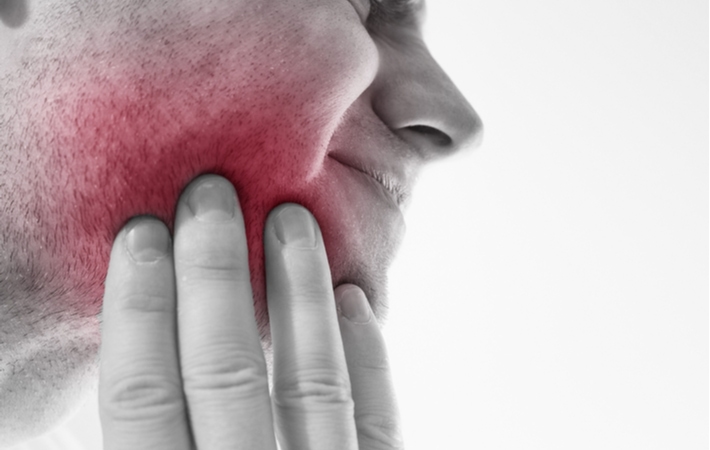If you are experiencing discomfort in your mouth, how do you know if you need a dental filling or a root canal? What are some obvious signs to watch for, and when should you book an appointment with your dentist?
Anatomy of a Tooth
The complexities of a root canal can be difficult to understand without some basic knowledge of a tooth’s anatomy.
- Enamel: The outer layer of a tooth is called the enamel. It is primarily translucent, beige or white coloured, and mainly made of porous calcium phosphate.
- Dentin: Dentin is calcified living tissue, located under the enamel. Dentin surrounds the tooth’s pulp, and it makes up the majority of a tooth’s structure.
- Pulp: Pulp is a living layer of blood vessels and nerves, located at the innermost area of the tooth.
- Cementum: Cementum is a calcified layer of tissue surrounding the root of a tooth, helping connect the tooth to the gums.
What is a Root Canal?
Decay can enter the tooth’s soft core, resulting in the pulp becoming infected, necrotic or inflamed. The dentist may recommend a root canal to clear out the decay in the root and pulp, and preserve your tooth.
A root canal procedure consists of:
- Extraction: Bacteria, rot, and decay are removed from the tooth’s pulp, root and nerve.
- Disinfection: The affected area is treated with antibiotics.
- Filling: The empty roots are filled with biocompatible material.
- Sealing: The root canals are sealed using adhesive cement to prevent new decay.
A root cancel has many benefits, like:
- Alleviating pain
- Keeping the natural tooth in place
- Reduced need for tooth extraction
- Maintaining the bones surrounding the tooth
- Less costly than an implant
Will it Hurt?
Years of seeing maniacal dentists and tortured patients on TV and in films has definitely affected the world’s view of root canals!
Yes, a root canal procedure can seem a little scary, but great news: today’s technology has reduced the experience to something closer to a deep cavity filling, and of course, local anesthesia helps numb your teeth and gums before the procedure.
You can expect some soreness or tenderness in the mouth after your root canal, and your dentist may recommend over-the-counter pain medications to help while you’re healing.

Signs You May Need a Root Canal
When it comes to dental health, early diagnosis and treatment usually lead to a better outcome. Make an appointment with your dentist if you notice any of these signs or symptoms:
- Pain: Tooth pain is a telltale sign that you may require a root canal. The pain may be constant, or intermittent. Pain can be felt deep in the tooth’s bone, in every tooth, certain teeth, in the face, or the jaw.
- Sensitivity: Aching or pain in the teeth when consuming something hot or cold can indicate that vessels and nerves in the tooth are damaged or infected.
- Discolouration: When the tooth’s pulp is infected, it can break down internal tissue, causing the tooth to appear gray or black.
- Swollen or uneven gums: Swelling can be constant or intermittent and tender to touch.
- A bump on your gum: These bumps are known as gum boils, resulting from an infection in the tooth.
- An injury: Injuries to the mouth can damage a tooth’s nerves, or result in inflammation and infection from bacteria.
- Movement: Infected teeth may feel loose.
- Darkening gums: An infected tooth can result in the decay of surrounding gums.
- Abscess: An abscess is a hole in your jawbone where the bone cannot grow due to infection. Your dentist will advise you of any abscess during your routine dental X-rays.
An Ounce of Prevention
Dental hygiene may not be the cure for all our problems, but it’s pretty close!
If you’re interested in preventing the need for a root canal, we recommend following the same hygiene habits that help ward off tooth decay, cavities, and other dental health issues.
Keep those chompers healthy by following the helpful steps:
- Twice-daily tooth brushing: Yes, we know you’ve heard this one before, but brushing your teeth morning and night can be highly beneficial to your oral health.
- Flossing: Make sure you get between each tooth at least once a day.
- Fluoride: Check the ingredient labels to make sure that your toothpaste and rinse contain fluoride.
- Check-ups and cleanings: Don’t be shy! Follow your dentist’s recommended check-up and cleaning plan to make sure your teeth stay shipshape.
- Stick with tricks, not treats: Okay, don’t give up on all treats, but try limiting sugary foods that tend to get stuck on your teeth. Remember to rinse your mouth or brush your teeth after eating sweets!
These hygiene tips may not completely eliminate your odds of requiring a root canal, but they certainly will help to improve your oral health and lower your risk of needing the procedure.
Keep Smiling
If you have questions about root canals or suspect you may need one, contact our team at Markham Dental Smiles. We’re ready to help you find the answers you’re seeking, and alleviate any pain or discomfort you may be experiencing.
Our dentists have been serving the Markham community for over 20 years, and love providing our patients with brighter, healthier, and happier smiles.







